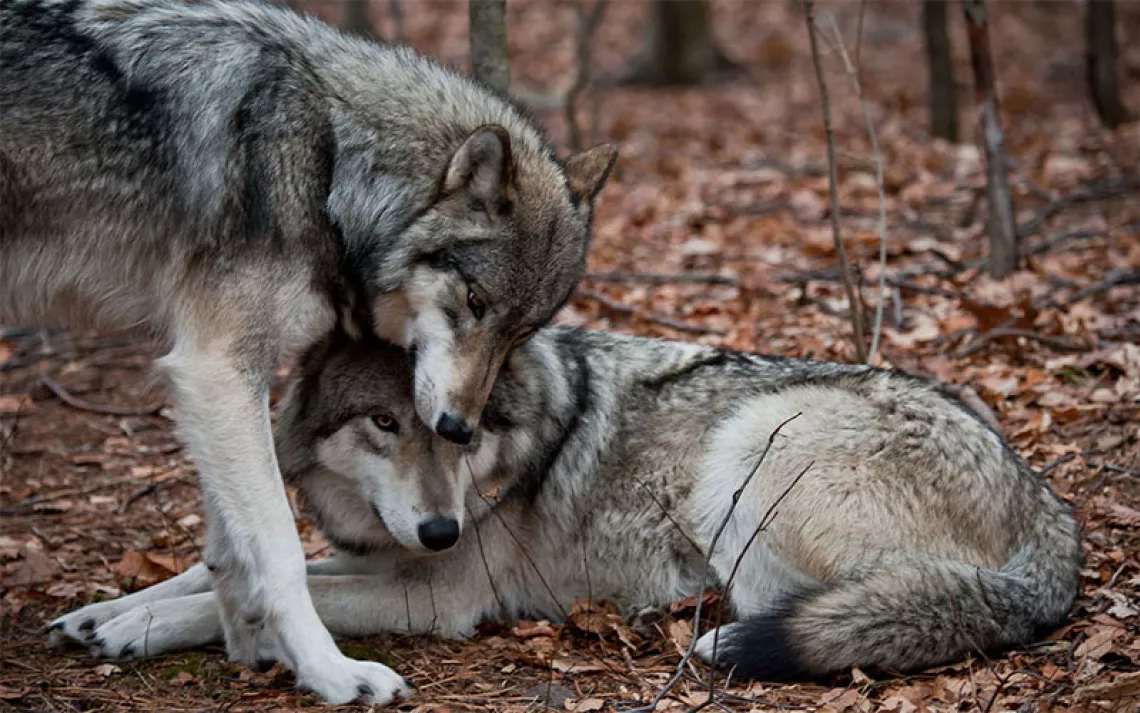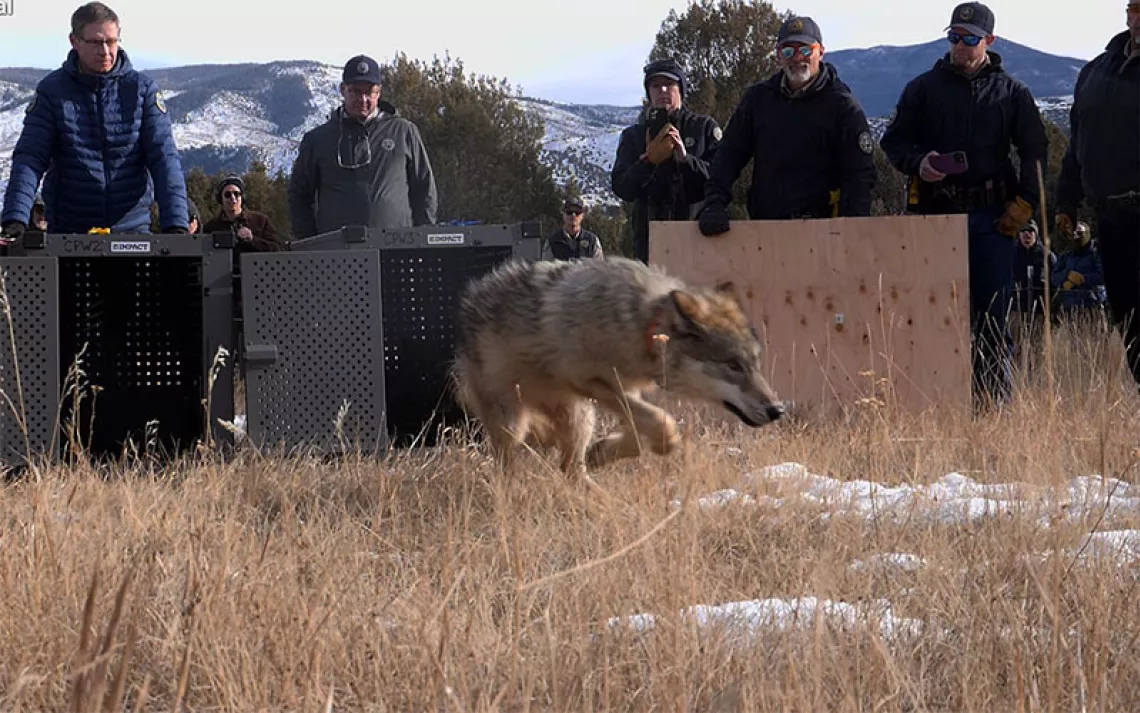Good News for Gray Wolves
Judge reverses a Trump-era decision to remove many gray wolf populations from the endangered species list

Photo by LeFion/iStock
Gray wolves—at least some of them—have finally caught a break.
On Thursday, February 10, a federal judge in the Northern District of California restored Endangered Species Act protections for gray wolves that had been delisted by the Trump administration in 2020. Earthjustice challenged the decision on behalf of several conservation groups, including Sierra Club, in early 2021. Two related cases were also included in Judge Jeffrey White’s ruling.
“It’s a great day for wolves, but also for the Endangered Species Act,” Jamie Rappaport Clark, CEO of Defenders of Wildlife, told Sierra. “I’m excited that the judge ruled with us on all the major interpretation issues surrounding the ESA.”
The judge sided with the plaintiffs on several key points, agreeing that the US Fish and Wildlife Service failed to account for the impact of lost historical range and failed to analyze gray wolves across the entire country, instead basing its delisting decision “on the purported recovery of wolves in the Great Lakes and Northern Rocky Mountains.”
The decision immediately puts an end to wolf hunting and trapping outside the Northern Rockies, including Wisconsin, where 218 wolves were killed in just three days last year.
The ruling will also narrow the scope of a 12-month status review of gray wolves initiated by USFWS last September. The review was prompted by emergency petitions filed by conservation groups last May and July. Though initially focused on the entire western United States, the agency’s review will now focus solely on delisted wolves in the Northern Rockies.
Wolves in this region, which includes Montana, Wyoming, and Idaho, are still under state management. Hunters in Idaho legally killed 496 wolves last year—nearly a third of the state’s wolf population—and Montana’s liberalized hunting regulations have been disastrous for wolves that inhabit Yellowstone National Park but occasionally range outside its borders. Twenty-three Yellowstone wolves have been killed so far this hunting season.
Indigenous nations, conservation groups, and lawmakers have been urging Interior Secretary Deb Haaland to issue an emergency relisting for Northern Rockies wolves. Just last week, Secretary Haaland wrote an opinion essay for USA Today expressing alarm over the number of Yellowstone wolves lost and reminding states that they are bound to uphold treaty rights. She also stated that the federal government will “reinstate federal protections under the ESA for the Northern Rocky Mountains' gray wolf, if necessary.”
“I thought it was an amazingly well-articulated shot across the bow,” said Rappaport Clark of Haaland’s letter. “She’s clearly aware of her authority and prepared to use it.”
While wolf advocates will no doubt keep the pressure on Haaland and the USFWS, this ruling will allow conservation groups to focus their efforts on coexistence in those regions where wolves once again are protected by federal law.
 The Magazine of The Sierra Club
The Magazine of The Sierra Club



